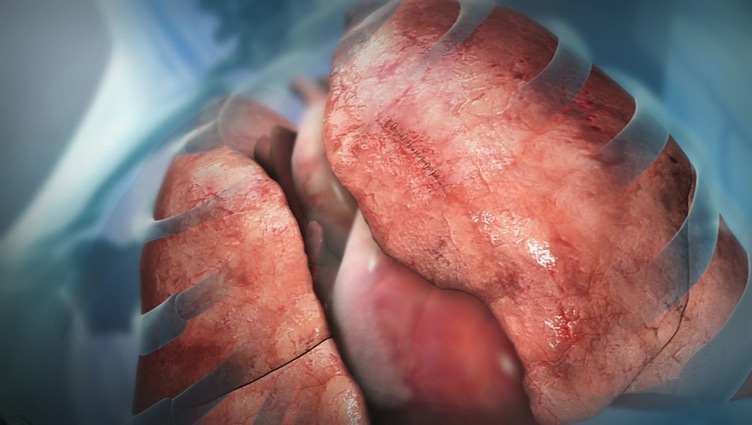
Cut to print: How to leverage high quality medical animations for your print graphics needs?
They say a picture is worth a thousand words. That may be, but sometimes, only a picture will do. Creating all the graphics required for all of your collateral materials, including brochures, surgery manuals, press releases or online graphics can be quite cumbersome and expensive. But if you’re already producing 3D animations for your drug or device, you might be able to leverage your videos in collateral graphics.
An inch on screen is not worth an inch on paper.
First the basics, seeing a beautiful, retina-display enabled 12 inch graphic on screen does not mean you can print the cover of a brochure with that stunning graphic. In fact, even an HD 1920 pixel image width, will yield about 6 inches for a standard 300 DPI print. But this can be plenty for most embedded print graphics needs such as in articles or brochures. For a handy DPI to Pixel converter, click here
Music is always better unplugged, images ... uncompressed.
If you want to get the most out of your images make sure you have the most quality in your images. Most animation companies will not give you source files for your animation because it’s like going to a gourmet restaurant and asking for the Chef’s secret recipe along with the food. However, though the .avi or other video file they give you as part of the final delivery looks really good, it is not usually of the highest quality because it has been compressed for optimal play on whatever media it is intended for. Ask your vendor for the uncompressed file (which they should not object too). This gives you the full resolution encoded in the base video. In some cases, uncompressed files can be more than 10x the size of compressed video. For example, a standard compressed HD of 45 min can be as low as 700MB and still look pretty good, but as anyone whose downloaded 1080p video from their digital camcorder knows, 45 min can be as high as 7-10 GB. Get the uncompressed version and you’ll be able to zoom into small parts of the image that you might have thought were unusable.
A little planning goes a long way...
The best way to leverage your corporate film, 3D animation or other videos is to plan for them. Say you need a 8x11 graphic for your brand new cardiac device and you are commissioning an HD animation. Tell your graphics company you’ll need a beauty shot of 2400x3300 as a device showcase. For many projects, the actual texture on the device may already be conducive to very high-resolutions, and so, without the anatomy, it’s actually quite inexpensive to do, if the media agency or graphics company knows in advance.
In fact, it’s a good idea to make a list of all the collateral materials you think you could use. Commissioning a 3D beauty image on its own for print, for mobile or web, requires building the 3D shot, and that can cost more than a $1000 for a single shot and still not be an attractive, or large enough job for most agencies. However, asking for an illustration, where the shot from the animation is beautified in a photo processing software, or even a shot of the device not shown in the animation at all can cost as little as a third when done in conjunction with the animation.
Get creative
Animations don’t just produce still images for ready use. They can often produce designs. A blurred out background image of your device can be used as a watermark for your brochure, while the crisp, beauty shot can be used on the web. But get creative and the visuals from your 3D animation will serve you well in a myriad of ways.
Here are a few:
- A close up of your logo on the device can provide a great background to the title slide of your next presentation.
- Don’t be afraid to play your animation, stop at any time point, print a screenshot, and photo process / crop / instagram the image till you get out a usable kernel.
- Take a few shots into Picasso and collage it, maybe together with pics of your team, training locations and awards or achievements that your medical device has.
- Throw it into powerpoint and overlay the text on the animation with text relevant to your presentation. You’ll be surprised how just changing text on the image can transform the image from instructional to marketing oriented or from practical to philosophical.
- Take four or five shots and create a .gif file out of it. A gif is like a mini animation and can often be used to show parts of a movie, or one two or three second stop motion animation. A gif derived from your animation can be used on your website as an add for your device, or even on a button that launches the animation itself.
Pay it forward
Probably the best benefit of getting an uncompressed 3D animation for you medical device is that it can last forever. Years after the work, after product redesigns and releases, you can still use the thousands of images (1800 per minute of animation) that come from the video and find usable high quality graphics, if not for print anymore, than at least for the web.








